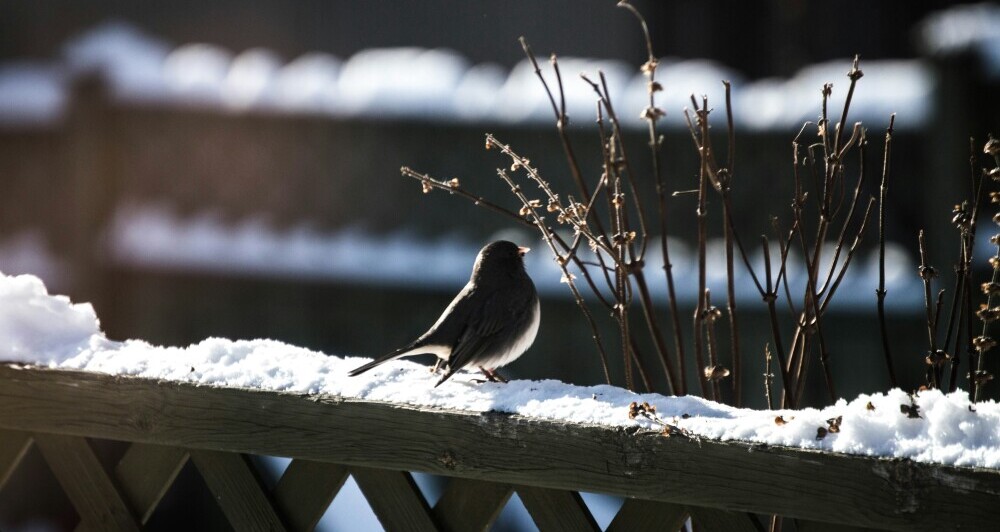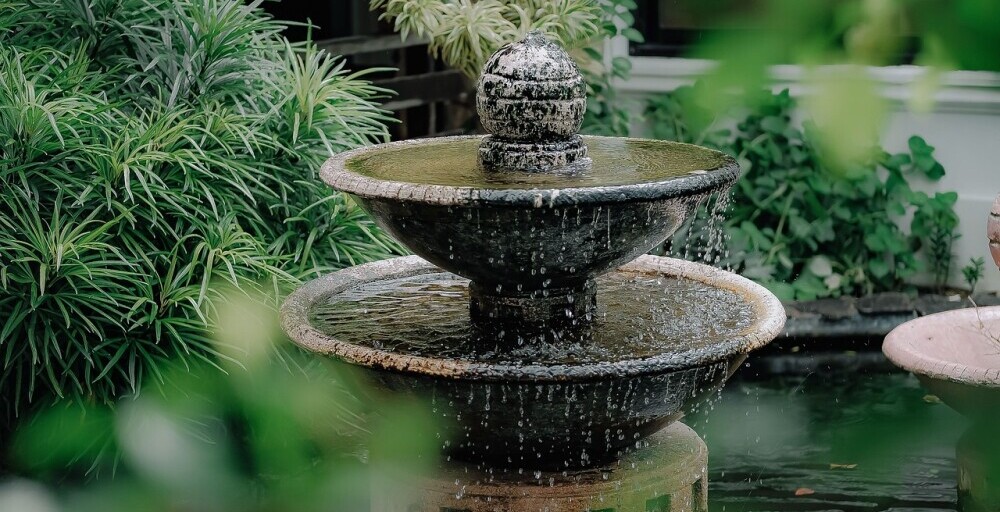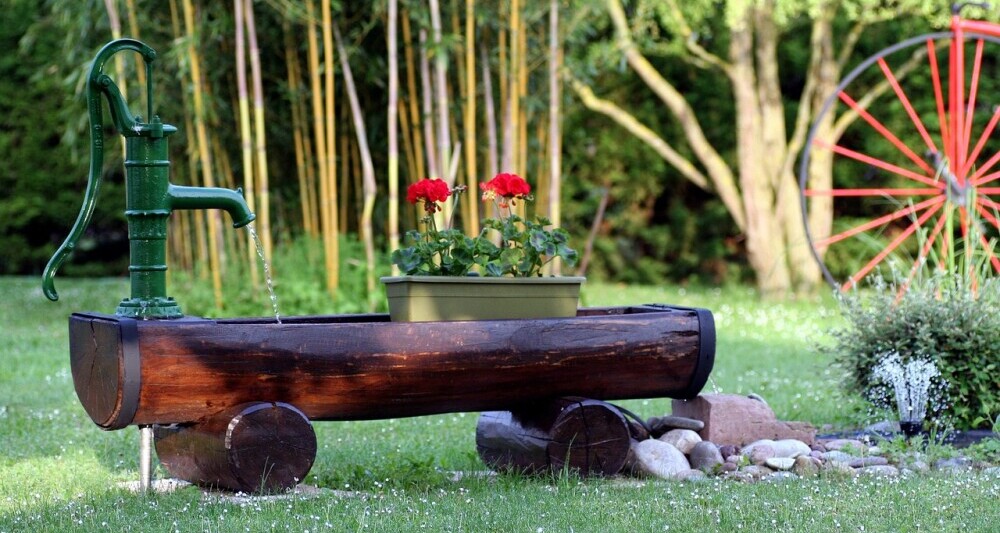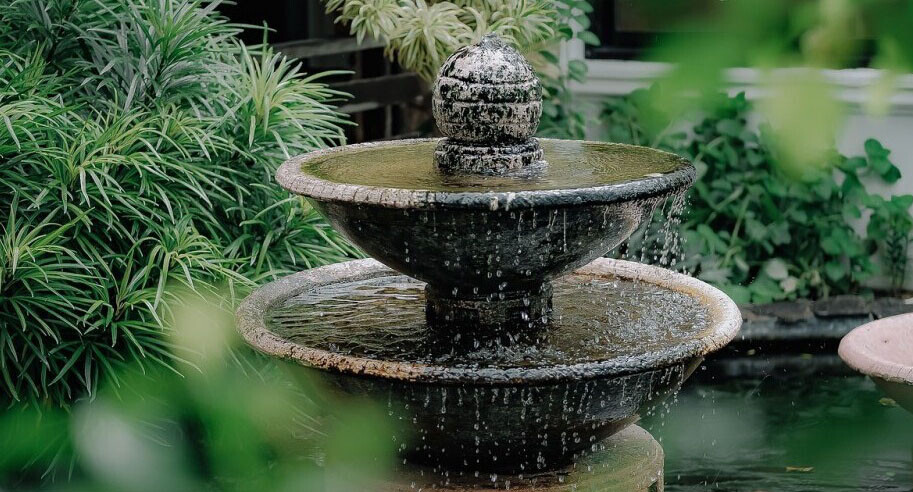
Weather-related damages can sneak up on your garden fountain, transforming a once serene masterpiece into a maintenance headache. Freezing temperatures, brutal winds, and relentless rain can all take their toll, each leaving a different mark. Cold snaps are notorious for causing water to freeze, expand, and crack materials, especially if your fountain’s made from stone or ceramics.
Strong winds, they’re not just for kite flying—they can tip over or misalign structures that aren’t secured well, while prolonged sun exposure can lead to fading or warping, particularly with metal pieces. And don’t forget about heavy rains. They can result in overflow or water pooling issues, which might undermine the stability of the fountain itself.

One question people often ask is whether they can leave an outdoor water fountain running 24/7?
While it might seem convenient to keep that peaceful gurgle going all day, doing so can wear out the pump over time. So, unless you’ve got a super efficient pump or your fountain’s designed with continuous operation in mind, it’s better to give it occasional breaks to prevent burnout.
To really understand what could potentially go wrong, you’ve got to think like the elements. By anticipating problems, you’re better prepared to tackle them head-on. This way, any damage from weather doesn’t just catch you off guard, giving you ample opportunity to prevent and prepare.
Solutions to Common Issues: Fixing and Preventing Damage
Finding cracks or leaks in your garden fountain can feel like spotting a tear in your favorite sweater—annoying, but fixable. Leaks often give themselves away with a drop in water levels, so if you notice this, don’t ignore it.
Fixing a leaky outdoor fountain means first identifying the crack or vulnerable spot. Clean the area around the leak thoroughly to get rid of algae and debris, then use a suitable sealant. For small cracks, a waterproof epoxy or sealant works well. Just apply and give it proper curing time before you switch the fountain back on.

Having the right tools is key. Keep a handy toolkit with patch-ups that cater to your fountain material—stone, metal, whatever it is, match your repair method to it. Also, think ahead. Applying a protective coat and using weatherproof paints can fend off minor damages before they happen.
Proactive care is like a vaccination for your fountain. Regular check-ups mean you can catch issues while they’re still small, saving you from bigger hassles down the road. Simple measures like adjusting the water level to an optimal flow help prevent excess pressure buildup that often leads to cracks and leaks.
Taking a little time to examine and understand the symptoms of damage allows you to maintain your fountain’s charm and functionality over the long haul. This way, you’re not just dealing with the aftermath but actively minimizing the likelihood of any fallout.
Winterizing Your Garden Fountain for the Cold Months
When the chill sets in, it’s time to protect that garden centerpiece from becoming a winter casualty. Think of winterizing as giving your fountain a cozy blanket against the cold.
The key here is to prevent water from freezing inside the fountain. First off, drain the fountain completely. Leaving water in there is like inviting ice to an unplanned party. Use a wet/dry vacuum to clear out any residual water, especially from the pump, to prevent damage.
Consider adding a proper fountain cover. These are great for shielding your fountain from ice and snow buildup. Make sure it fits snugly and is made from durable, weather-resistant material.
For those extra chilly climates, think about using a de-icer. These handy devices keep the water temperature above freezing, so ice doesn’t stand a chance—even if you want to keep a bit of water inside for aesthetic purposes.
And don’t forget about the surrounding area. Clear debris from the fountain base and plug-up any unnecessary openings to avoid clogging when the thaw comes. This preventive step helps to reduce future maintenance woes.
Taking the time to winterize ensures that when spring rolls around, your fountain’s all set to get back to what it does best—creating a tranquil escape in your garden without the post-winter cleanup hassle.
Additional Care: Ensuring Longevity and Performance
Beyond preparing for winter and fixing leaks, regular maintenance is like giving your fountain a check-up—a little TLC that goes a long way. Keeping the fountain clean is the first step. Algae and mineral build-ups not only look unsightly but can cause wear over time.
Waterproofing your fountain adds an extra layer of protection. Applying a high-quality sealant creates a barrier against moisture intrusion. Make sure you choose a sealant that’s compatible with your fountain material—resin, stone, or metal. It’s a straightforward task but can really beef up your fountain’s resilience.

Each type of fountain material has its own quirks. For instance, resin surfaces might need UV protection to prevent sun damage, while metal components could benefit from a rust inhibitor. Match your care strategies to your material for the best results.
And then, of course, there’s the aesthetic side. A well-maintained fountain not only functions better, but it shines when showing off in your garden. Balancing this aesthetic with practical care is all about finding the right combinations of treatments and techniques that work best for the setup you have.
Ultimately, taking these steps is about keeping that tranquil vibe in your outdoor haven uninterrupted. By investing some effort into regular upkeep, your garden fountain remains a beautiful, peaceful focal point throughout the seasons.



Hey,
Thank you for sharing such an informative article.
It has just turned frosty here in the UK so we need to start winterising our gardens, especially the water taps and fountains.
I will put into action the advice you share and let you know how I get on. If I have any questions I will get in touch, if that is OK?
Thank you for sharing and keep up the great work.
All the best,
Tom
Thank you for your reviwing this article. Nice to hear it is helpful. Any questions, i’m willing to talking and discuss that. Cheers!
Hi Zheng, this a super post for anyone to read, especially now the weather is getting colder and those who have garden fountains to follow your advice would be a great help, keeping them clean, clear and free from possible weather damage!
I have often thought of investing in a garden fountain, but haven’t yet found the right one. I wanted one that works on solar, hence not having to worry about battery charging or wiring it up!
If I eventually do invest in one, I will definately follow your very useful advice!
Keep up the good work, and thanks for sharing your expertise!
Julia. 😊
Thank you for stopping by Julia. Garden fountain will do add more appealing accent to your garden. And the solar-powered fountain do get more and more popular due to energy efficiency and easy for clean up and neat(the solar-powered fountain will not get so many cables). And it is suggested to opt one with battery, so you can still enjoy 4-5 hours fountain in performance in the night time normally. Keep in touch and any questions, feel free to come back!